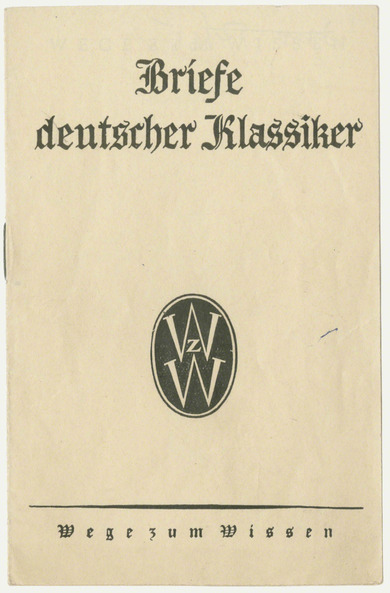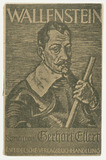Camouflage publications
Dein Plan hinsichtlich der Propaganda ins Land hinein hat meine Zustimmung und Mitwirkung. […] Es kann bei diesen Sachen niemals genug werden. […] Meine Dünndruck-Manifeste zähle ich nicht mehr. Mein Ziel ist bei allem das Deine: die deutsche Erhebung muss dem Krieg zuvorkommen.
[Your plan regarding bringing propaganda into the country has my consent and participation. [...] It can never be enough in these matters. [...] I am not counting my little manifestos any more. My goal is the same as yours with everything: the German uprising must forestall the war. (ed. trans.)]
Heinrich Mann in a letter to his brother Thomas Mann on 25 May 1939
In order to protect their readers and distributors against reprisals, many texts that served the resistance were printed in neighbouring countries and circulated in Germany in a camouflaged form. The texts were “dressed” in a harmless cover with an innocent-looking, but sometimes deliberatively subversive title for those with knowledge of the contents. Information about the publisher and the actual authors could only be found on the inside pages. Camouflaged texts were often smuggled in through third countries in waterproof bottles or cans, in rolls of fabric, suitcases with false bottoms, spare tyres, or even in the ship's garbage can. The writings often began only after a few pages. Sometimes they were hidden in other containers: in Agfa film containers, in bags of custard powder, tea or tomato seeds.
Literature and art were only a small part of the camouflaged texts. More often they conveyed a political content, such as Braunbuch über Reichstagsbrand und Hitlerterror (the Brown Book on the Reichstag Fire and Hitler’s Terror), published in Paris in 1933, and were published by emigrants from the communist or socialist parties in exile, as well as the Schutzverband Deutscher Schriftsteller (the Defence Association of German Writers). Those who participated most among the writers were Gustav Regler, Bodo Uhse, Bertolt Brecht, Rudolf Leonhard, Anna Seghers, Willi Bredel and Heinrich Mann. Also texts written by Thomas Mann were circulated in a camouflaged form in Germany, such as his correspondence with the philosophy faculty of the University of Bonn in 1936 and 1937 concerning the withdrawal of his honorary doctorate, which was published in 1937 by Oprecht in Zurich and disguised as Briefe deutscher Klassiker (Letters of German Classicists).
Futher reading:
Gittig, Heinz: Illegale antifaschistische Tarnschriften 1933 bis 1945. 87. Beiheft zum Zentralblatt für Bibliothekswesen. Leipzig: Bibliographisches Institut 1972
Greinert, Cordula: Subversives Brausepulver. Heinrich Manns Tarnschriften gegen den Nationalsozialismus. In: Work in progress. Doktorandinnen-Jahrbuch der Rosa-Luxemburg-Stiftung 1. Berlin: Dietz 2011, S. 329 – 344
Ruppelt, Georg: „Die Kunst des Selbstrasierens“. Tarnschriften gegen die nationalsozialistische Diktatur. Lesesaal Heft 5. Hameln: Niemeyer 2002





